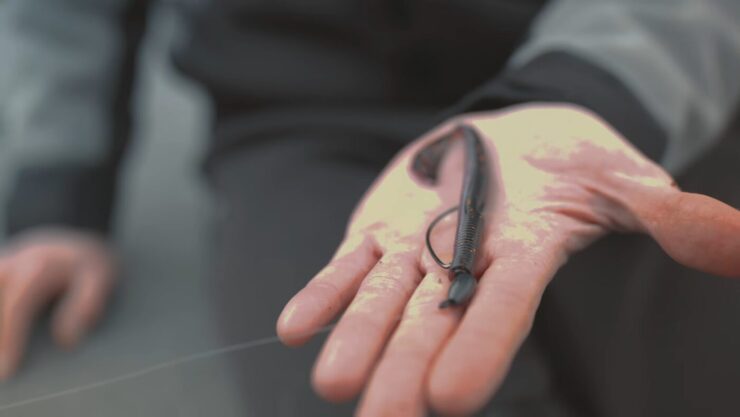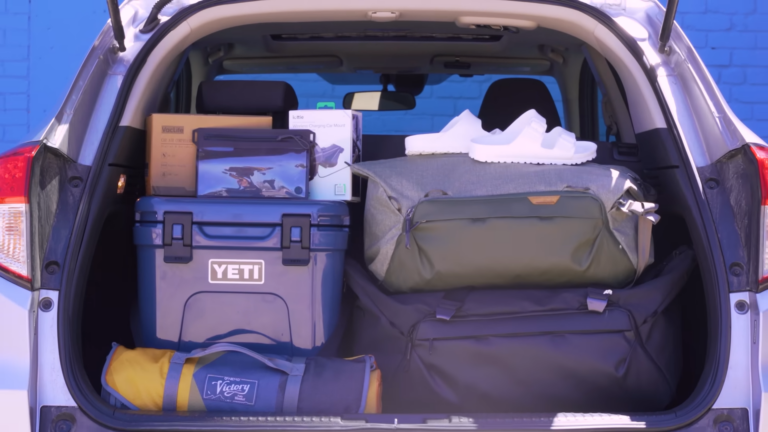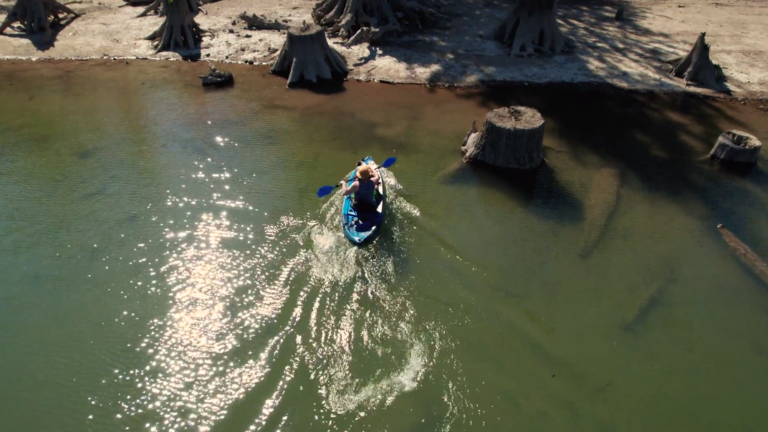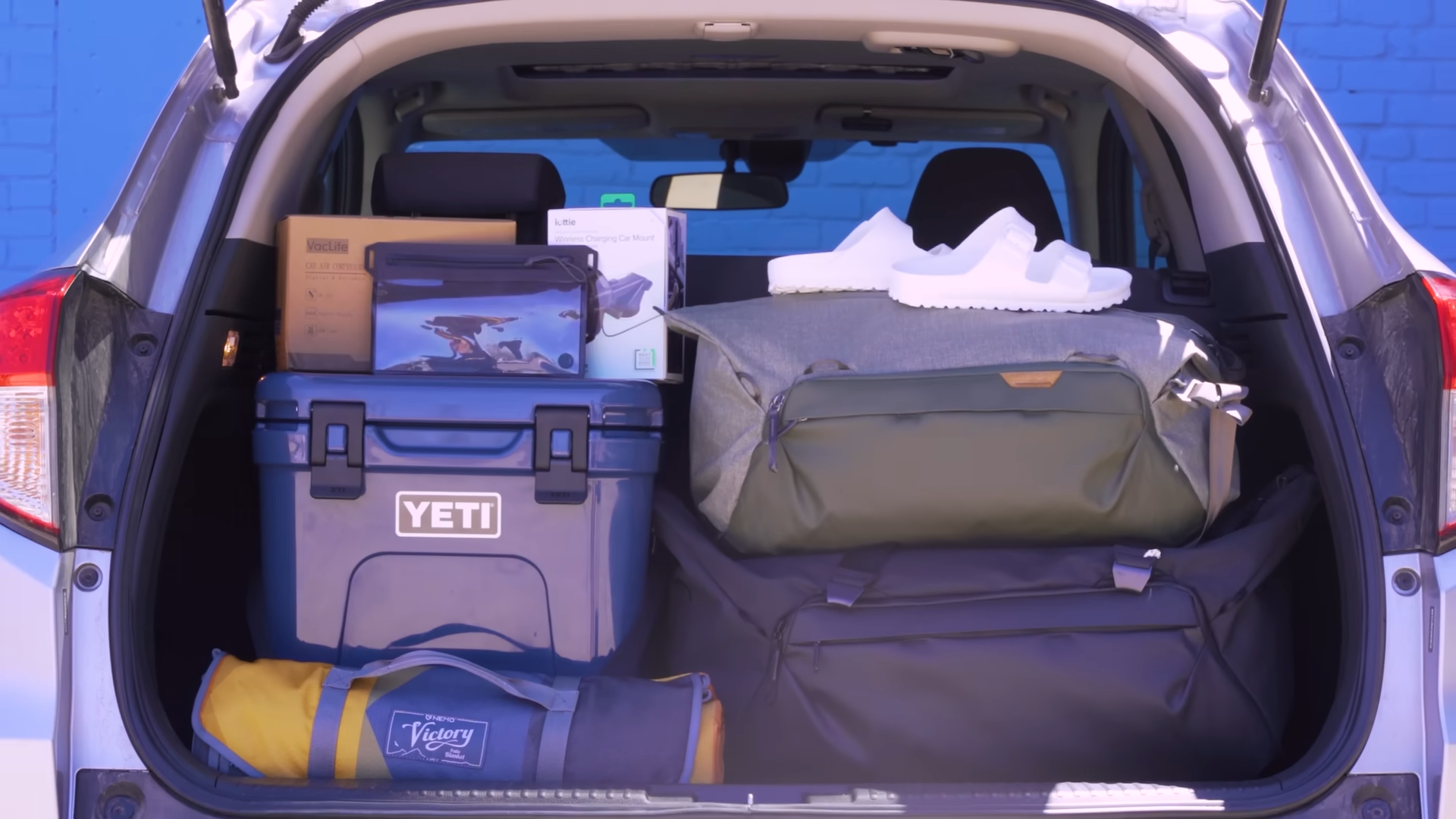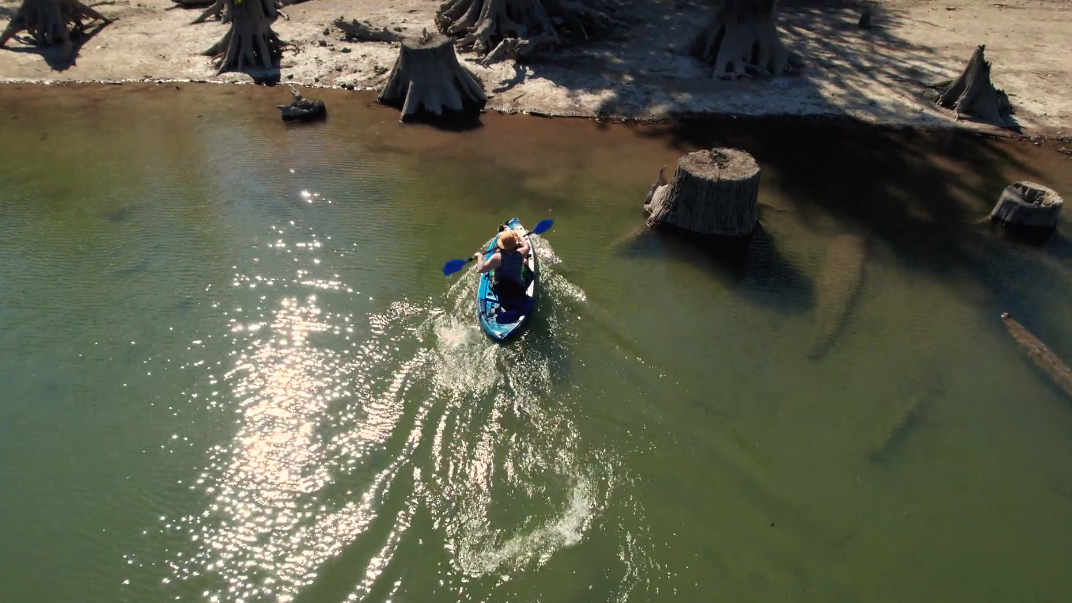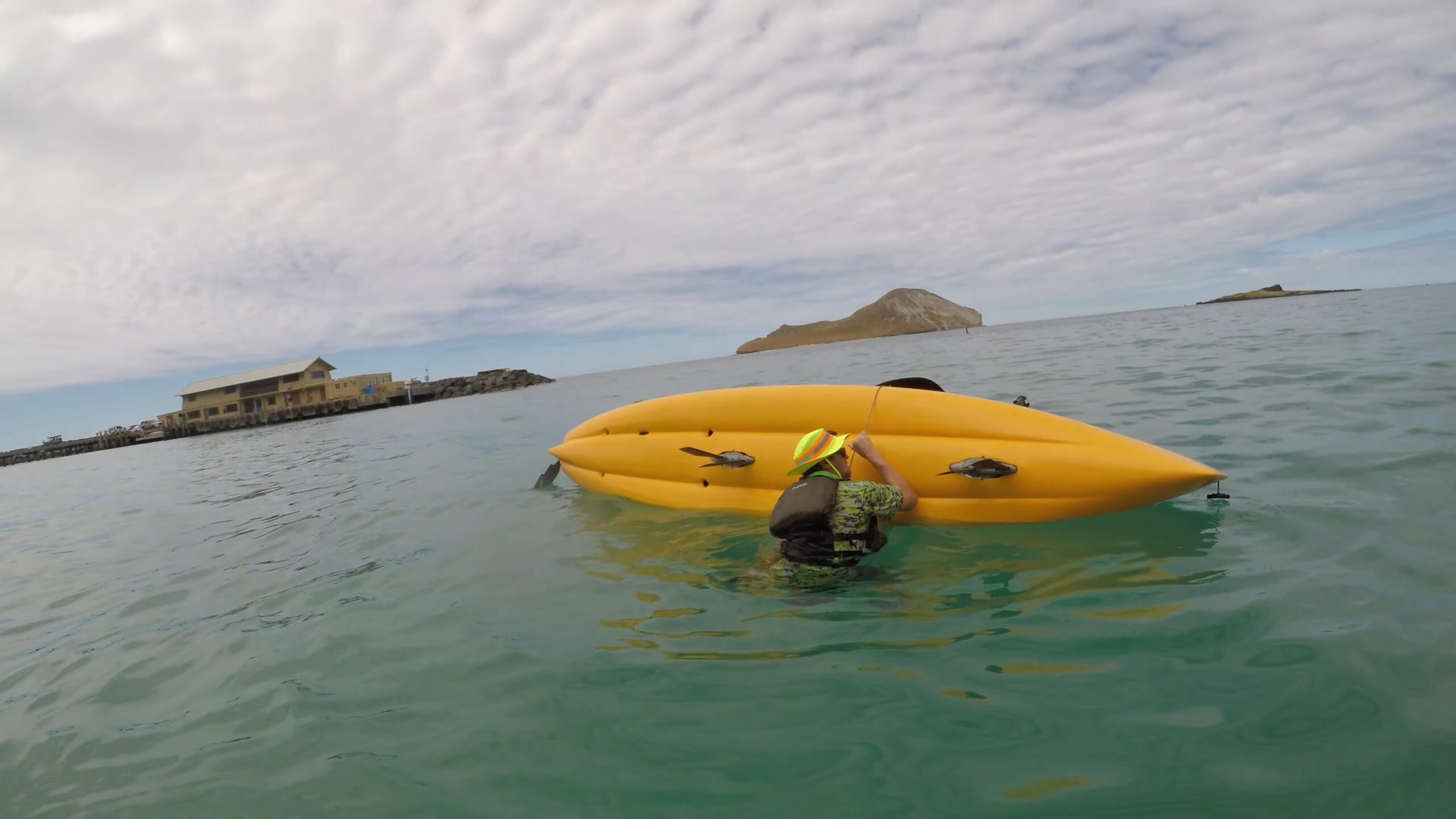Fishing has been a sport and pastime enjoyed by millions for centuries. Throughout the years, techniques and tools have evolved, offering anglers new challenges and victories. One debate that has captured the fishing world by storm is choosing between the Ned Rig and the Texas Rig.
Both methods offer distinct advantages and are favorites for specific types of fishing conditions. In this blog post, we will discuss each of these famous rigs, dissect their pros and cons, and provide you with the information you need to make an educated choice for your next fishing adventure.
Table of Contents
ToggleThe Basics You Need to Know
Before starting the discussion about the details, let’s familiarize ourselves with what a fishing rig is. Essentially, it refers to the way you set up your fishing line and hook to catch fish. Your choice can significantly affect your success, especially when you’re targeting specific fish or fishing under certain conditions.
There are countless types of rigs available, each designed for a specific type of fishing. Today, we focus on two popular ones: the Ned and the Texas Rig. Both have seen a surge in popularity for their effectiveness, but understanding their mechanics will give you a tactical edge on the water.
Components of a Ned Rig
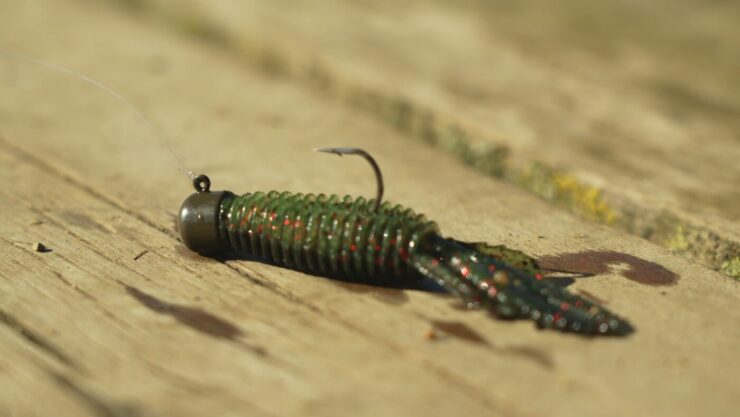
A Ned Rig is an incredibly simple setup, requiring only a few key components. Generally, you’ll need a light line, a small jig head, and a soft plastic lure that’s often cut down to size. Despite its simplicity, this variation has proven to be highly effective in catching various types of fish, including bass.
For those of you who are beginners or even experienced anglers looking to try something straightforward yet effective, the Ned Rig could be the ideal choice. It is user-friendly and less intimidating than some other complex setups, making it a good starting point for novice anglers.
Ideal Conditions
The Ned Rig excels in certain conditions. It’s a go-to option for clear water, light fishing pressure, and when targeting finicky fish. The rig’s unassuming presentation often entices bites even when fish aren’t particularly active.
While it is highly versatile, the Ned Rig tends to be less effective in heavily vegetated or snag-prone areas. Its exposed hook makes it more likely to catch debris, which can be a drawback in specific environments.
Texas Rig Explained
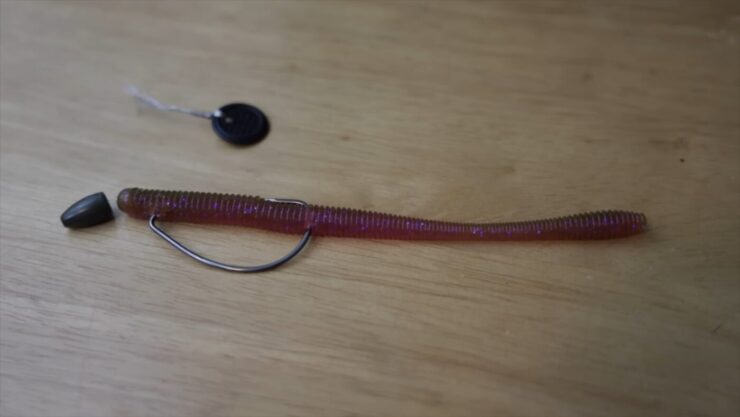
The Texas Rig is another popular choice among anglers, particularly for those targeting largemouth bass. This setup allows for a “weedless” presentation, making it ideal for fishing in heavy cover without getting snagged.
The Texas Rig has been around for decades, and its longevity speaks to its effectiveness. In this section, we’ll dissect what makes up a Texas Rig and what conditions are best suited for its use.
Components
The main components of a Texas Rig are a bullet weight, a plastic worm or other soft plastic bait, and a hook. The bullet weight is threaded onto the line first, followed by a hook tied to the line. The soft plastic bait is then rigged onto the hook in a weedless manner.
- Bullet Weight: Allows the bait to sink and gives it a natural movement.
- Hook: Often a wide-gap hook is used for effective hook-setting.
- Soft Plastic Bait: Can range from plastic worms to crawfish or lizards, depending on the target species and fishing conditions.
Ideal Conditions
The Texas Rig is incredibly versatile but shines in specific scenarios. If you’re fishing in areas with heavy cover, such as submerged vegetation, stumps, or logs, a Texas Rig is often the best choice. The weedless setup allows you to fish in places where other rigs would get snagged.
Highly versatile, the Texas Rig can be adapted to fit various fishing styles and conditions. Whether you’re flipping, pitching, or casting, the Texas Rig remains an effective choice for many situations.
Ned Rig vs Texas Rig: Side by Side
Now that we’ve covered each rig’s basics let’s compare them side-by-side to help you make an informed decision. We’ll evaluate them based on effectiveness, versatility, and ease of use.
Effectiveness
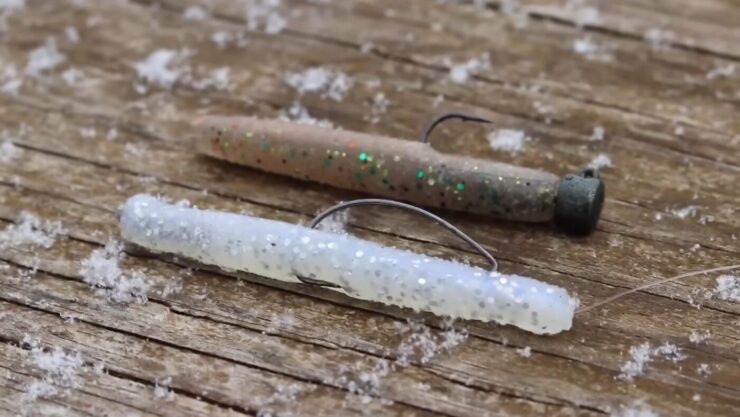
- Ned Variation: Highly effective in clear water and for finicky fish, but can get snagged in heavy cover.
- Texas Variation: Excellent for fishing in heavy cover, versatile enough for various conditions and species.
The Ned Rig is perfect for situations that call for a subtle approach, while the Texas Rig excels in more aggressive scenarios, especially in challenging environments.
Versatility
- Ned Variation: Ideal for finesse fishing, less versatile for different types of cover and conditions.
- Texas Variation: Can be used in a variety of scenarios ranging from clear water to heavy cover.
When it comes to adaptability, the Texas Rig has the upper hand. You can modify it to suit a broader range of conditions and target species.
Ease of Use
- Ned Variation: Simple setup, making it user-friendly and less intimidating for beginners.
- Texas Variation: Slightly more complex but offers the advantage of being customizable.
Both rigs are relatively easy to set up, but the Ned Rig takes the cake for sheer simplicity, making it a favorite among new anglers.
Tips for Success
You’ve learned the basics and nuances of both rigs. But knowledge is only part of the equation. To truly make the most of them, you’ll need to master the art of applying them in real-world scenarios.
We’ve prepared some practical tips to help you get started. Whether you’re a novice learning the ropes or an experienced angler looking to refine your technique, these insights are designed to give you a leg up.
Mastering the Ned Rig
- Choice of Bait: Go for smaller, more subtle soft plastics to mimic natural forage. Baits like small craws, stick worms, and small paddle tails are effective choices.
- Casting Technique: Given that the Ned Rig is light, consider using a spinning reel for easier casting. This is especially useful in windy conditions.
- Retrieve Speed: A slow and steady retrieve often works best for a Ned Rig. This gives the bait a more natural movement, which is crucial for enticing hesitant fish.
Practicing these tips can significantly enhance your fishing experience. Remember, the Ned Rig is all about finesse and subtlety, so take your time and focus on the details.
Mastering the Texas Rig
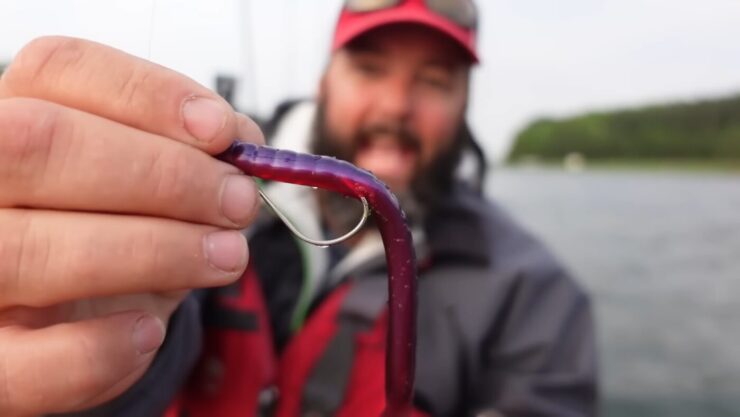
- Choice of Weight: The weight of the bullet sinker can significantly affect the action of your bait. A heavier weight is ideal for windy conditions or deeper waters.
- Hook Selection: Choose a hook that complements the size of your bait. Too large a hook can make your bait look unnatural, while a small one can result in missed hook sets.
- Working the Cover: When fishing in heavy cover, make sure to work your bait through the area thoroughly. Don’t hesitate to pitch or flip your bait multiple times into promising spots.
FAQs
Can I Use a Fluorocarbon Line with Both Rigs?
Yes, you can use a fluorocarbon line with both. Fluorocarbon is virtually invisible underwater and has a faster sink rate, which can make your presentation more natural.
However, it’s generally better suited for the Texas variation when fishing in deeper water or heavy cover. For the Ned variation, you might opt for a lighter fluorocarbon line to maximize its finesse presentation.
How Do I Choose the Right Jig Head for My Ned Rig?
Choosing it can be a bit confusing with the range of options available. The key factors to consider are the weight and the hook size. A lighter jig head (1/16 to 1/8 oz) is ideal for shallow water, while a slightly heavier one may be better for deeper water.
The hook size should match your soft plastic bait, aiming for a balanced presentation.
Can I Use Scented Baits with These Rigs?
Absolutely, scented baits can be used with both to increase your chances of attracting fish. Many anglers swear by the use of scented soft plastics or adding scent to their baits, as it provides another layer of enticement.
However, remember that using scented baits may not always be permitted, depending on local fishing regulations, so always check the rules first.
What Types of Rods Are Best for Each Rig?
For the Ned Rig, a medium-light to medium-power spinning rod with a fast action is often recommended. This allows for better sensitivity and easier casting of the lighter rig.
For the Texas Rig, a medium-heavy to heavy baitcasting rod with a fast to moderate-fast action is ideal, especially if you’re fishing in heavy cover.
Can I Use a Ned Rig in Cold Water?
Yes, it can be very effective in cold water conditions. Fish tend to be more lethargic in colder temperatures, and the subtle, slow presentation of the Ned Rig is often what’s needed to entice a bite. It’s a good idea to go with a lighter jig head and slower retrieve when fishing in cold water.
How Do I Avoid Snags When Using a Texas Rig?
To minimize the chances of getting snagged when using a Texas Rig, practice the ‘feel’ of your bait as it moves through different types of cover. Learning to differentiate between the pull of a snag and a bite is crucial. Also, the Texas Rig’s weedless design should help you avoid most snags, but a cautious and slow approach will further reduce the chances.
Final Thoughts
Choosing between these rigs ultimately depends on your specific needs, the conditions you’re fishing in, and your skill level. For clear waters and more finicky fish, the Ned variation’s subtle presentation is often the key to success.
On the other hand, if you’re dealing with heavy cover and need a more aggressive approach, the Texas Rig is your go-to. So, there you have it, a comprehensive guide to understanding these rigs. Armed with this knowledge, you’re now better equipped to make the right choice for your next fishing adventure.
Related Posts:
- Heavy Duty Fishing: 11 Best Rods And Reels For Big Fish 2024
- 16 Best Kayak For Beginners 2024 - Kayaking Adventure Gear
- 10 Best Saltwater Fishing Boats - Ultimate Angling Adventure
- 12 Best Motorized Kayak 2024 - Start Your Aquatic Adventure!
- 10 Best Sit-Inside Fishing Kayaks 2024 -…
- 12 Best Bass Boats Under $20,000 2024 - Catch Your Prize

